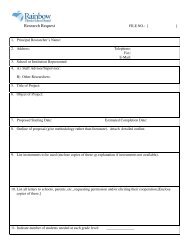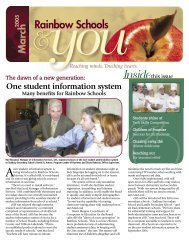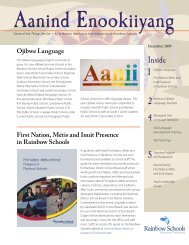Doing Mathematics with Your Child, Kindergarten to ... - EduGains
Doing Mathematics with Your Child, Kindergarten to ... - EduGains
Doing Mathematics with Your Child, Kindergarten to ... - EduGains
You also want an ePaper? Increase the reach of your titles
YUMPU automatically turns print PDFs into web optimized ePapers that Google loves.
What’s your angle on that?<br />
Mapping My World<br />
Geometry and Spatial Sense<br />
What Shapes Make Structures Stable?<br />
Grade 4 <strong>to</strong> Grade 6<br />
Benefits<br />
In this activity, your child will learn some basic concepts about maps – most<br />
importantly, that pictures and symbols on a map represent actual objects in<br />
the world.<br />
Benefits<br />
In playing these games, your child will come <strong>to</strong> understand that some<br />
shapes are more stable than others.<br />
Tip!<br />
Creating a concrete (three-dimensional) map helps your child <strong>to</strong> develop<br />
concepts about paper (two-dimensional) maps.<br />
Tip!<br />
Building activities help your child <strong>to</strong> think about how certain shapes<br />
keep things from falling down.<br />
• Help your child make a map of a familiar setting (such as his or her bedroom or the<br />
park) by using small objects <strong>to</strong> represent larger objects (for example, a paperclip<br />
can represent a bed, or a block can show the location of a tree).<br />
• Talk <strong>with</strong> your child about where you live in relation <strong>to</strong> where a friend lives or in<br />
relation <strong>to</strong> the corner s<strong>to</strong>re. Use directional words and phrases, such as beside and<br />
<strong>to</strong> the right of. Together, draw a map of your neighbourhood, marking landmarks and<br />
familiar places.<br />
Symmetry Is All Around Us<br />
• With your child, identify all the symmetrical<br />
capital letters. Have your child sort the capital<br />
letters according <strong>to</strong> whether they have one line<br />
or two lines of symmetry. For example, C has<br />
one horizontal line of symmetry; H has two lines<br />
of symmetry, one vertical and the other horizontal.<br />
• Go on a symmetry hunt. With your child, find shapes, objects, patterns and designs<br />
around your home that have lines of symmetry. Discuss whether they have<br />
horizontal, vertical or diagonal lines of symmetry. Look at wallpaper, floor tiles,<br />
pictures and designs on packaging.<br />
• Invite your child <strong>to</strong> use 50 straws or tightly<br />
rolled tubes of newspaper and some tape<br />
<strong>to</strong> build the tallest freestanding structure<br />
that he or she can build. The structure<br />
must not be attached <strong>to</strong> the floor or a wall<br />
or a piece of furniture.<br />
• Ask your child which shapes (for example,<br />
rectangle, triangle or circle) he or she<br />
thinks will make the structure stable.<br />
• With your child, look at pictures of skeletal<br />
structures, such as hydroelectric <strong>to</strong>wers,<br />
roller coasters and suspension bridges.<br />
Ask your child which features of the<br />
structures make them stable and have your<br />
child explain why.<br />
• Ask your child whether the designs have<br />
examples of symmetry. Have your child<br />
explain how he or she knows.<br />
22<br />
<strong>Doing</strong> <strong>Mathematics</strong> <strong>with</strong> <strong>Your</strong> <strong>Child</strong>, <strong>Kindergarten</strong> <strong>to</strong> Grade 6: A Parent Guide<br />
<strong>Doing</strong> <strong>Mathematics</strong> <strong>with</strong> <strong>Your</strong> <strong>Child</strong>, <strong>Kindergarten</strong> <strong>to</strong> Grade 6: A Parent Guide<br />
23

















